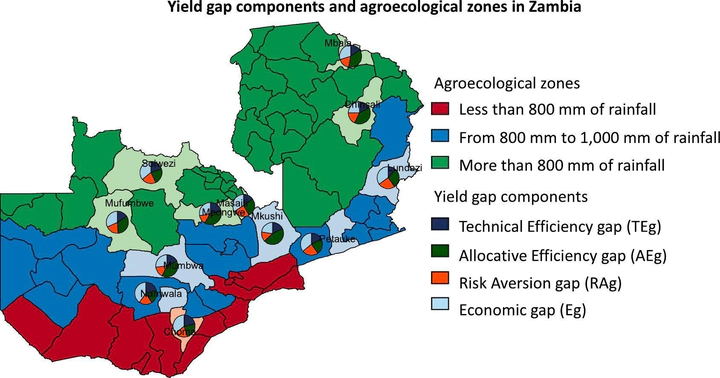
Abstract
Sub-Saharan Africa (SSA) has the climatic and biophysical potential to grow the crops it needs to meet rapidly growing food demand; however, agricultural productivity remains low. While potential maize yields in Zambia are 9 t per hectare (t/ha), the average farmer produces only 1–2. We evaluate the contribution of responses to weather risk to that gap by decomposing the yield gap in maize in Zambia. While we know that improved seed and fertilizer can expand yield and profit, they may also increase the variance of yield under different weather outcomes, reducing their adoption. We find approximately one-quarter of the yield gap can be explained by risk-reducing behavior, albeit with a substantial geographic variation. Given this finding, under present conditions, we expect that the average maximum yield that farmers can obtain without increasing risk is 6.75 t/ha compared to a potential profit-maximizing level of 8.84 t/ha. The risk-related yield gap is only expected to increase with weather extremes driven by climate change. Promoting “one-size-fits all” solutions to closing the yield gap could underestimate the effect of risk mitigation on agricultural production while increasing farmers’ risk exposure.